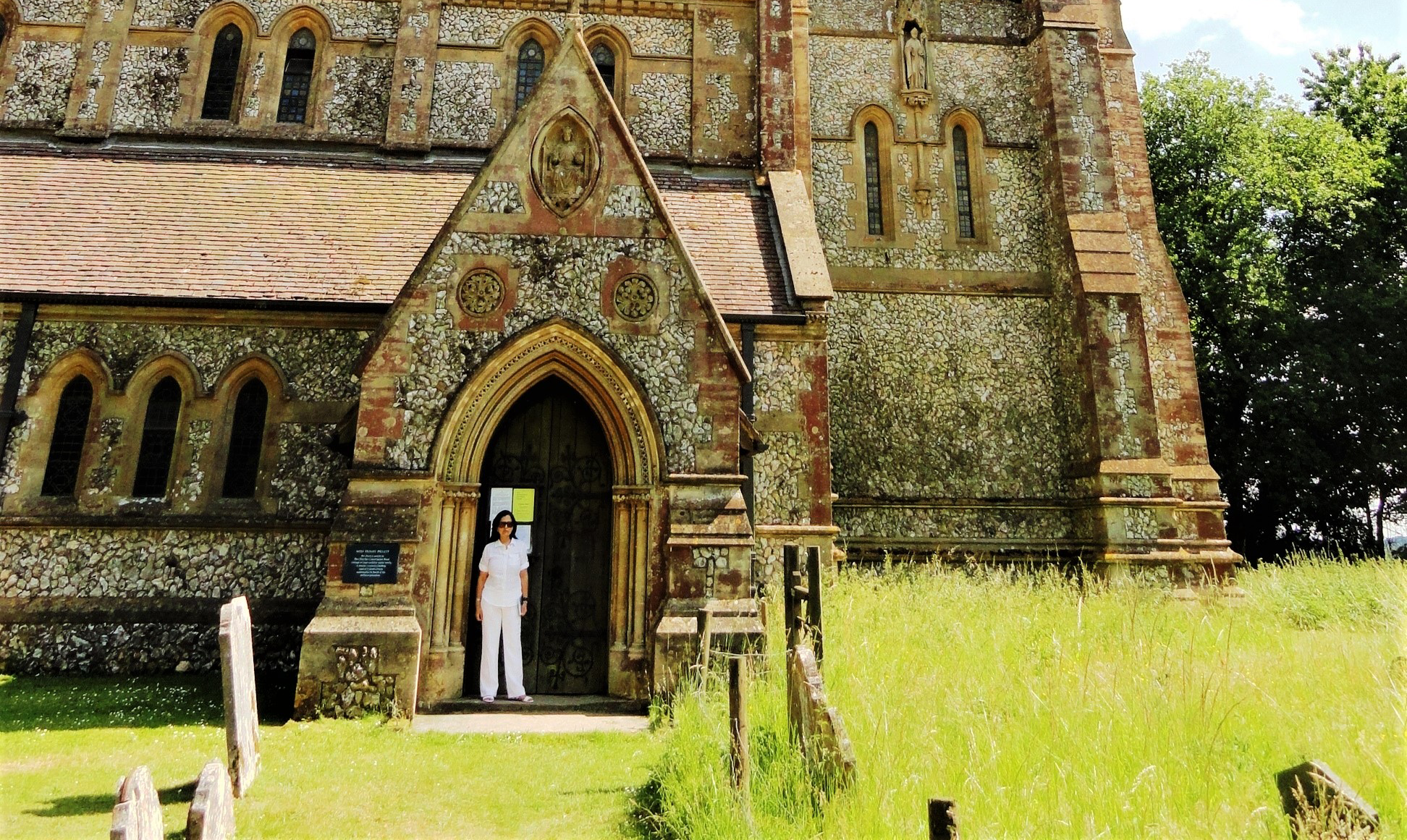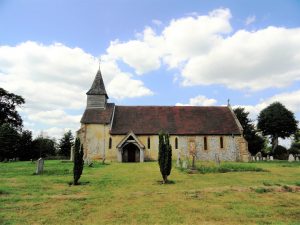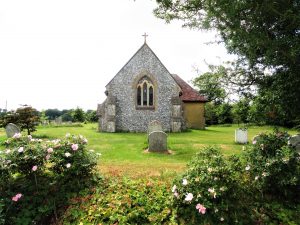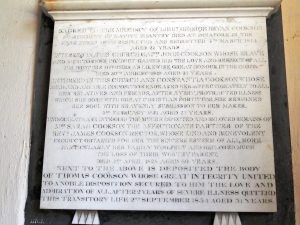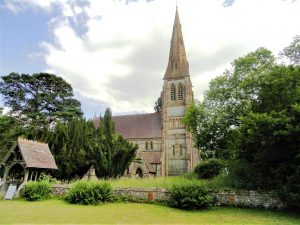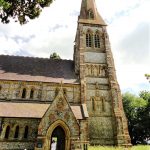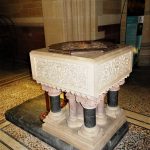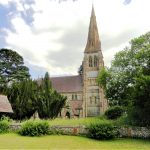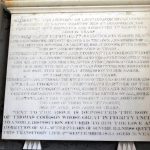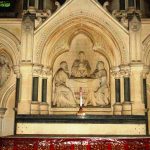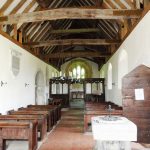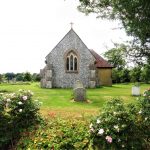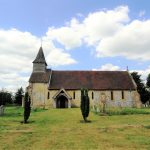Church Trail- A Spiritual Adventure
On an annual visit to England I speculated on the aspect of novelty that I could append to it. The answer immediately emerged as I came out of the Windsor Railway Station. I noticed two similar pictures on a Wall – of verdant emerald English landscape, one with a Church in the forefront and the same second picture without the Church building and a catchphrase – The English Landscape without Spires and Bell towers. Now, this was a Help-call from the Churches Conservation Trust-CCT as the architecturally and historically significant Churches are crumbling with changing times; while some are no longer used for regular worship and the reason for their maintenance being the prime concern.
The CCT has saved over 340 beautiful Churches attracting more than a million visitors a year by raising funds through guided tours and donations besides funds from government and Church of England. Also the plan welcomes people to repair a Bell, Clock, Stained-Glass, Furnishings, Organs and likes. How I hope that one day we will do the same for the preservation of our ancient and crumbling temples and monuments. This was the brainwave behind the Church- Trail initiated for visitors that led us to the tranquil beautiful Churches of beguiling Hampshire countryside.
Saint Peter AD Vincula, Colemore
Driving through luxuriant shades of greenery, we caught the first view of the beautiful Church – Saint Peter AD Vincula at Colemore with a two sided lawn scattered with graves – situated in a secluded thinly populated spot. I had read earlier that the Church had no outer wall as the iron fence which originally formed the front of the Church had been removed during the Second World War.
Of Church Graves
Only few grave stones were visible though more than a thousand people had been buried here and most of the villagers lay in unmarked graves. So I guess, we walked over these unseen medieval graves to enter the flint and sandstone 11thcentury Church which had been rebuilt in the 1870’s and restored several times during the past centuries.
Sufficient light filtered into the Church through the arched windows for us to look around. Straight ahead was a marble plaque with obituaries to a Cookson family. We noticed the one on the top which was dedicated to the ‘sacred memory of Lieutenant Bryan George Cookson who died in Dinapore in East Indies, March 1814, age 22.’
On my right was the mid 12th century Font-a pedestal for baptizing, which had a newer Victorian base and column. A wooden ladder had a sign that requested visitors not to climb it, the raison d’être was the date 1694; cut into it side. Up above us were two similar bells belonging to two different centuries and cast in different places. The one on the left dates from 1380 AD, was cast in Wokingham town and the one on the right dates from 1627 AD, cast at Reading town.
On my right was the short Nave of the Church with a wooden Rood- screen, further down dividing it. Since medieval times the congregations stood here, as there were no pews or other seating of any sort! As we walked towards the end of the Nave sun rays poured in through the 11 century window and we saw number of grave slabs for long serving rectors set into the floor of the Church.
Historical view
We read in the pamphlet that the Saint Peter AD Vincula Church has been recorded in the Domesday Book (the great Inventory showing land and assets of England, compiled 1086) though it is believed that Saxons were settled here and it is highly probable that a Church stood on this site before.
The contributions of the 17 century Vicar John Greaves, an eminent Mathematician, and his three sons are still remembered.
We noted that appeals for its repairs have been regularly made from 1308 till 1973, and post that the Church passed into the care of CCT.
Holy Trinity Church, Privett
Soon we were on our way to the Holy Trinity Church, Privett in Hampshire itself. While searching for the way we spotted the commanding view of the185 feet high Towerand Spire of the Church from a distance and followed the same to reach our destination. A notice greeted us outside the Church and we entered through an old wooden door which was bolted but not locked as many Churches are open the year around, others have Key-holders nearby and mostly the entry is free.
A remarkable Mansfield stone-Font greeted our eye. The style of the Church is 14th century though it has many characteristics of a Victorian-era rebuilt Church. Mosaic Floor, the Arcades, Pulpit and the Sculptures along with every thing created an effect of grandeur. We could not resist climbing up the Pulpit for photographs.
Crossing 7 black Belgium marble steps we reached the Altar to look closely at the splendid Reredos representing Christ at The Supper, behind it. (Reredos is an ornamental decoration, sculpture or screen and can be behind the main Altar of the Church with religious images of stone or wood or metal or a combination of the two). Other noticeable features were the artistic expensive Stain-glass east-windows and the magnificent Italian marble.
History and more
The Church was recreated by a local Nicholas Family, famous as distillers, replacing a medieval building in the late 19 century. One of its member-Brigadier John Nicholson started his distinguished Army career in India in 1884 and spent ten years there. A Chapel of Holy Trinity at Privett was recorded in 1391 and some believe it to be built on the same site. In the 1960’s after the last of the Nicholas family passed away; it had the same story and became another redundant Anglican Church till the Church Conservation Trust took it over. On our way out, we looked for the unique Yew Tree planted in October 1727, as mentioned in the Church register!
A Thought
Throughout our visit to both the Churches we met no one but gathered information from the reading material stacked neatly or hung up and if we purchased anything we were expected to leave money for it in the box closeby! I liked this concept, as it encouraged trust considering it was a Church we visited. While we were there, in addition to looking at the architecture and being acquainted with its history we contributed towards the conservation of the Church as well.
We felt ourselves welcomed into every Church though there was not a soul around to do so. It did not matter whether we held any faith or none, whether we believed or doubted but we considered only this, that this was sacred ground irrespective.
- Writer at the Holy Trinity Church
- The Mansfield Stone Font at Holy Trinity Church
- The 14th century-Holy Trinity Church, Privett
- Marble plaque on the Church Wall related to local Cookson family member who died in Dinapore India
- Grave Stones
- 11th century Saint PeterAD Vincula Church, Colemore
